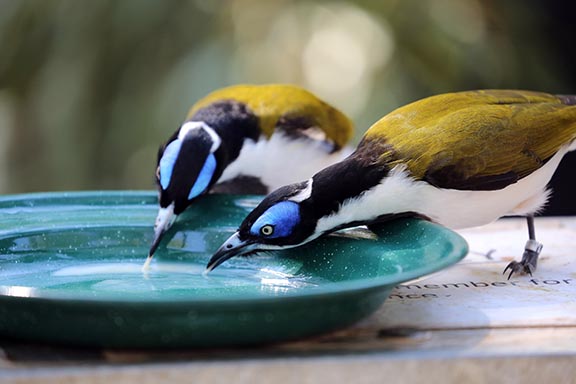Helping wildlife beat the heat
 SMALL FARMS NETWORK - SUMMER 2020-21 - ENVIRONMENT
SMALL FARMS NETWORK - SUMMER 2020-21 - ENVIRONMENT
By Cameron Butcher
Land Services Officer
P: 02 6051 2233 | M: 0428 217 271 | E: cameron.butcher@lls.nsw.gov.au
 One of the benefits of living on small farms is the local wildlife that call our backyards home. With summer already here, one thing we need to consider is water availability for our native wildlife, particularly in areas impacted by fire or drought.
One of the benefits of living on small farms is the local wildlife that call our backyards home. With summer already here, one thing we need to consider is water availability for our native wildlife, particularly in areas impacted by fire or drought.
Native animals can sometimes go days without water as they access much of what they need through their food. However, in areas with little or no vegetation and water sources drying up, they may need a helping hand. It’s recommended to put out fresh, clean water for wildlife through spring and summer in shallow bowls in the shade, particularly on very hot days.
Some of the key aspects to consider are:
- Is water needed? (the water we provide should be used only until the conditions improve)
- The type of water container that we provide (it can be simple or complex)
- What types of animals need water? (bees and lizards need rocks and sticks to access water safely)
- Food should not be given to wildlife as they have complex diets
- Change the water often (mosquitoes will breed and the water will go stagnant)
- Some native animals, such as snakes, can be dangerous - we should only help them as a last resort.
To find out more, follow the links below:
https://www.environment.nsw.gov.au/topics/animals-and-plants/native-animals/helping-wildlife-in-emergencies
https://www.animalsaustralia.org/features/summer-wildlife.php
The video below from Animals Australia takes you through the simple process of making your own wildlife water station.